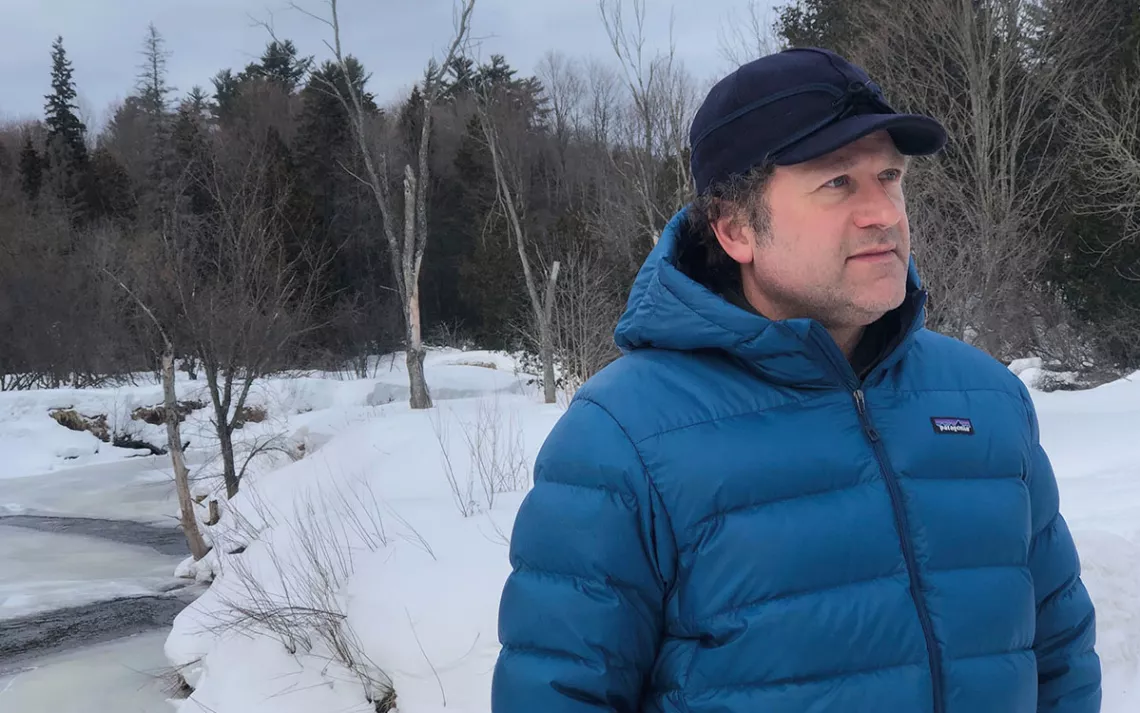Looking for the Missing in the Wildlands
“The Cold Vanish” examines disappearances, but Indigenous people are still missing

In the middle of the night on April 4, 2017, 22-year-old Jacob Gray left his grandmother’s house in Port Townsend, Washington, by bicycle. He pedaled through a cold rain toward the northern reaches of Olympic National Park, where he set his gear-laden bike next to the Sol Duc River.
Park rangers found the bicycle on April 6, but there was no sign of its owner. It didn’t appear as if the bike had been hit, or that any foul play was involved. They began an initial search, combing the river banks. They found a list of phone numbers in the bike gear, which eventually identified its owner as Jacob Gray.
The search was on for Jacob, a saga that stretched over 16 months and covered the turbid waters of the Sol Duc River, the vast forests and watersheds of Olympic National Park, small farms on the San Juan Islands, communes in British Columbia, and more. It’s a gripping story tracked in intimate detail by Jon Billman in his new book, The Cold Vanish: Seeking the Missing in North America’s Wildlands (Grand Central Publishing, July 2020).
An astonishing 600,000 people go missing each year in the United States, and many of them do so while venturing into America’s wildlands. Most of these stories have a tidy conclusion—the missing person is often found, and often found alive.
But Billman’s self-admitted “obsession” is with a specific subset of these missing cases: the wilderness cold vanish, the disappearances that “don’t make a lot of sense.” “I’m drawn to the stories that defy conventional logic,” Billman writes. “The proverbial vanished without a trace incidents, which happen a lot more (and a lot closer to your backyard) than almost anyone thinks.” These disappearances turn up few clues despite efforts that involve diving into rivers and lakes, rappelling down cliffs, searching by helicopter, and employing dog teams and professional trackers. They’re such strange and seemingly unsolvable incidents that the narrative may start to lean on the supernatural, on theories about portals to other dimensions and strange creatures that live in the wilderness.
Randy Gray’s intensive search for his son provides the book’s framework. Together, Billman and Randy hike, drive, and swim tens of thousands of miles in search of Jacob, enlisting professional trackers, concerned citizens, Sasquatch seekers, park rangers, and psychics. Along the way, Billman weaves stories of other wilderness disappearances with the deft hand of a fiction writer and journalist—both skills he teaches at Northern Michigan University.
Billman sheds light on the common snags hindering the searches for missing people: There is no central, shared database for police departments and federal agencies to tap into, to identify patterns in disappearances and to allocate resources for continued search efforts, and there are no federal standards governing terrestrial search and rescue operations. Turf wars bubble up as agencies tussle over who has authority over searches that transect various public land jurisdictions. And there are often inequities when it comes to a family’s financial ability to hire outside investigators and searchers; wealthy families can often buy more extensive searches for their missing.
There’s another inequity Billman touches on but doesn’t seem willing to air out much: that of missing Indigenous girls and women. “With all the people missing in national parks and other public lands, nothing comes close to the numbers regarding First Nations and Native American missing persons,” he writes. “For example, Indigenous peoples make up 7 percent of the population. Disproportionately, 32 percent of Montana’s missing persons are Native Americans.” Billman calls it “an epidemic.”
It would seem, then, that Billman owes at least a chapter to one of these disappearances, but here is a glaring omission. He dedicates a significant chunk of his word count to survivalist and purposeful disappearer Troy James Knapp, who evaded law enforcement while stealing from cabins to support his life in the Utah backcountry for seven years; he is certainly not a cold vanish. Meanwhile, Billman writes little more than a handful of sentences about the disturbing plight of missing Indigenous women in this country. It’s a lapse that registers as tone deaf. By the author’s own admission, this is an important topic; why doesn’t he address it?
Odd run-ins with serial killers and Sasquatch aside, I had hoped Billman would present some common threads from his extensive experience with wilderness disappearances to better inform readers on how to stay found. I’m a frequent hiker in Olympic National Park and in Mount Rainier National Park, two places with frequent disappearances, as Billman’s sleuthing uncovers. He loves telling “the stories that should give you pause every time you venture outdoors,” but he doesn’t offer much in the way of patterns or advice.
There are reasons people don’t come home after a day or a weekend in the wilderness—maybe we just don’t know them yet. Why doesn’t Billman present salient advice from all he’s learned, beyond just telling stories? It’s that missing piece that makes this book seem at times like self-indulgent rubbernecking. It makes for great reading, sure, but it’s also another missed opportunity.
 The Magazine of The Sierra Club
The Magazine of The Sierra Club



